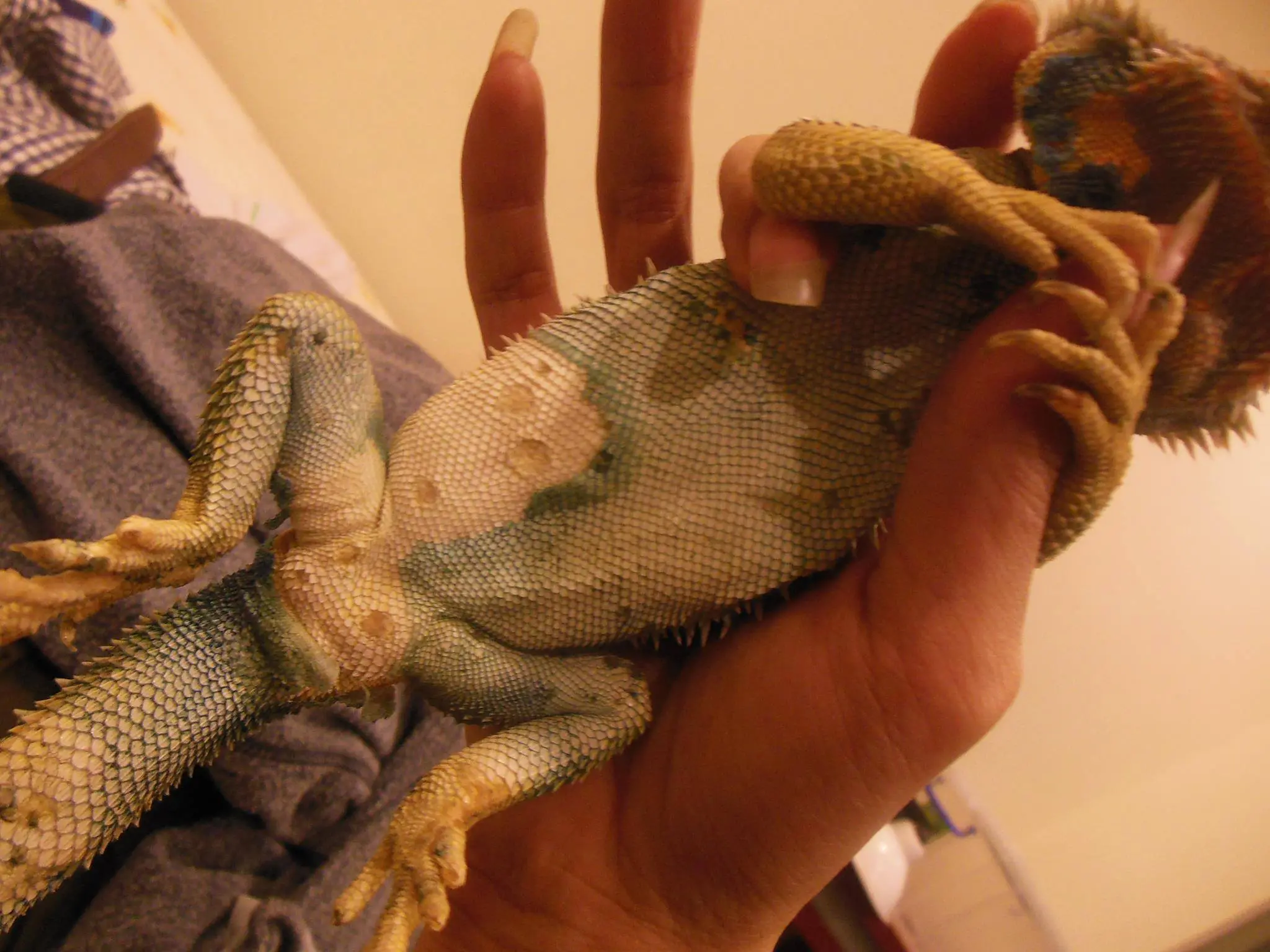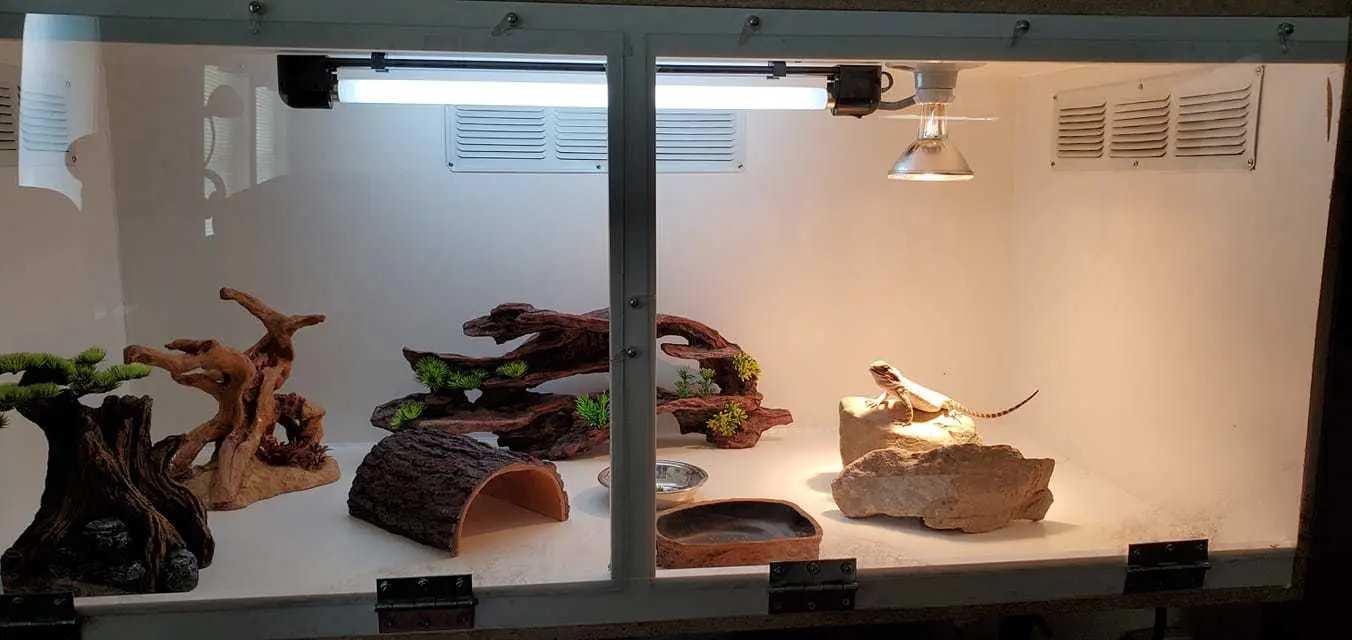Bearded dragons have become a popular reptile pet for adults and children alike.
They are considered the best pet lizard on the market with the majority of species being sold coming from central or inland areas, such as the semi-arid south eastern area of Australia.
Welcoming one of these wonderful lizards into your home will provide you with hours of entertainment, but as with any pet, your dragon can get sick.
One of the conditions that your bearded dragon may experience is scale rot.
What is Scale Rot?
Scale rot is a scale disease that can affect bearded dragons.
It’s usually caused by a bacterial infection, which can be due to the dragon being exposed to high humidity and dampness in their habitat.
Bacteria will fester in wet bedding and no matter how clean you keep your enclosure, if it is too moist, your dragon may start showing signs of scale rot.
Scale rot needs to be taken very seriously. Without proper treatment, this disease can be fatal for your dragon.
In most cases, you will find the dragon only shows a mild case of the disease, with one or two scales being infected. Without proper treatment, the disease can spread quickly.
Blisters may develop which are filled with a clear/yellow fluid. Mites can also be responsible for spreading bacteria. Once the scales are infected, they will start seeping, they will eventually come off completely.
In some cases, abscesses can form, while other cases patches form on the infected skin. After the infection is treated, it may take your dragon a few sheds for their skill to heal completely.
If left untreated, the bacteria can spread through the bloodstream of your dragon and result in septicemia, which can be fatal.
Signs and Symptoms of Scale Rot

This is how bearded dragon scale rot looks like
- Brown scales
- Skin becomes flaky
- Blisters may form between the scales
- Open lesions may form
- Lack of appetite
- Lack of energy
Causes
- Bacterial infection
- Wet bedding
- High humidity – Bearded dragons require humidity between thirty and forty percent
Treatment
The first step to an effective treatment is to place the bearded dragon suspected of having scale rot in a completely dry and clean environment with excellent ventilation, along with the correct temperature and humidity levels.
This is not enough to treat scale rot, taking into consideration that this could be a deadly disease for your dragon.
Make an appointment with your reptile vet as soon as possible for an accurate diagnosis and treatment plan.
The vet will physically examine the dragon and get some medical history, biopsies may be necessary to ensure correct diagnosis.
In most cases, antibiotics will be prescribed to ensure your bearded dragon returns to full health as soon as possible.
It’s important that the hospital tank you select is kept hygienically clean.
Use a paper towel or reptile carpet as a substrate and only add limited decorations, which are cleaned regularly. The enclosure must have ample ventilation and enough space.
An example of a good hospital tank for bearded dragons is the REPTI ZOO Reptile Glass Terrarium 36″ x 18″ x 18″. The enclosure offers a raised bottom frame and a waterproof base. The double front doors can open separately with excellent window ventilation on the left and right, as well as along the top.
Prevention
Prevention is key to reducing the risk of your bearded dragon getting scale rot. Always ensure that you house your dragon in the right environment with the correct temperatures and humidity.
The enclosure needs to be cleaned properly and disinfected, along with a well-balanced diet.

Make sure the bedding is not wet
To reduce the risk of wet bedding, consider using a reptile carpet, which is ideally suited for the bearded dragon.
The Zoo Med Eco Carpet is washable and easy to clean. It is a green product and reduces the risk of accidental ingestion and impaction.
You can easily interchange the carpet to reduce the risk of wet bedding, helping to keep your humidity levels down.
A hygrometer can help you ensure that you keep your humidity levels at the right level to reduce moisture and reduce the risk of scale rot in your dragon.
The POPETPOP 2 Piece Reptile Digital Thermometer and Hygrometer is a portable and easy to use solution to ensure your humidity levels stay below forty percent. Humidity ranges from ten to ninety-nine percent with the temperature of fifty to seventy degrees Celsius.
Conclusion
Due to the fact that scale rot can be deadly to your bearded dragon, you will want to ensure you maintain your humidity levels, keep your enclosure clean and if you see any signs, book a vet appointment as soon as possible to ensure you secure effective treatment as soon as possible.